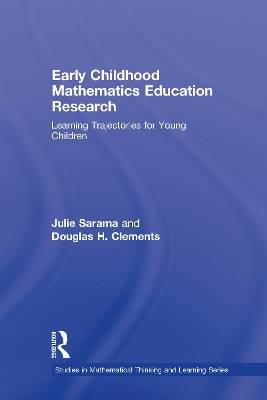Studies in Mathematical Thinking and Learning
2 total works
In this important new book for pre- and in-service teachers, early math experts Douglas Clements and Julie Sarama show how "learning trajectories" help teachers become more effective professionals. By opening up new windows to seeing young children and the inherent delight and curiosity behind their mathematical reasoning, learning trajectories ultimately make teaching more joyous. They help teachers understand the varying level of knowledge and thinking of their classes and the individuals within them as key in serving the needs of all children. In straightforward, no-nonsense language, this book summarizes what is known about how children learn mathematics, and how to build on what they know to realize more effective teaching practice. It will help teachers understand the learning trajectories of early mathematics and become quintessential professionals.
Early Childhood Mathematics Education Research
by Julie Sarama and Douglas H. Clements
This important new book synthesizes relevant research on the learning of mathematics from birth into the primary grades from the full range of these complementary perspectives. At the core of early math experts Julie Sarama and Douglas Clements's theoretical and empirical frameworks are learning trajectories—detailed descriptions of children’s thinking as they learn to achieve specific goals in a mathematical domain, alongside a related set of instructional tasks designed to engender those mental processes and move children through a developmental progression of levels of thinking. Rooted in basic issues of thinking, learning, and teaching, this groundbreaking body of research illuminates foundational topics on the learning of mathematics with practical and theoretical implications for all ages. Those implications are especially important in addressing equity concerns, as understanding the level of thinking of the class and the individuals within it, is key in serving the needs of all children.

